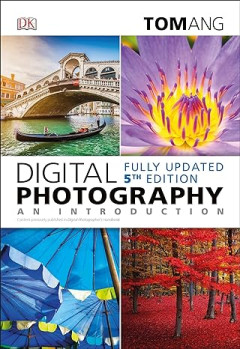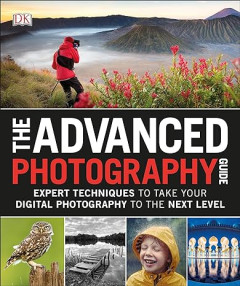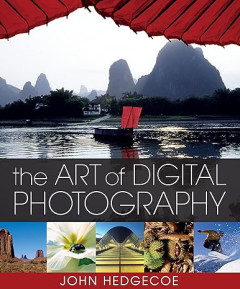Ditapis dengan
E-book Black Matrilineage, Photography, and Representation : Another Way of K…
Growing up in Boston, in the late 1970s, we saw Black motherhood as insepa-rable from Black Glamour. Our mother, Volora, a young R&B and jazz singer, and model had two types of photographs in our apartment, professional photographs of herself stored in a black leather portfolio with riveted han-dles and color polaroid images taken by our father, which lived in our family a…
- Edisi
- -
- ISBN/ISSN
- 9789461664631
- Deskripsi Fisik
- 337 hlm
- Judul Seri
- -
- No. Panggil
- 770 TIL b
E-book Pacific Exposures
Sometime around 1915, a dozen Australian women paused for a photograph as they readied for a Japanese-inspired parade at Wallaroo Mines in Kadina on South Australia’s remote Yorke Peninsula (see Figure 0.1). The women are dressed in homemade interpretations of kimonos and obis and wear chrysanthemums in their hair. Two of them hold …
- Edisi
- -
- ISBN/ISSN
- 9781760462543
- Deskripsi Fisik
- 266 hlm
- Judul Seri
- -
- No. Panggil
- 770 MIL p

E-book Watching, Waiting: The Photographic Representation of Empty Places
First study on empty places in photography and the Covid-19 pandemic. In the aftermath of Covid-19, the subject of ‘empty places’ has gained renewed topicality and resonance. Watching, Waiting presents a collection of essays that brings emptiness into interdisciplinary focus as an object of study that extends beyond the present. The contributors approach the specific interrelationships of p…
- Edisi
- -
- ISBN/ISSN
- 9789461665201
- Deskripsi Fisik
- 329 halaman
- Judul Seri
- -
- No. Panggil
- 778 ROB w
E-book Thomas Annan of Glasgow : Pioneer of the Documentary Photograph
Victorian Scotland was the site of an astonishing florescence of photography, and Thomas Annan was one of an impressive cohort of Scottish masters of the young medium. Born in 1829 into a farming and flax-spinning family in Dairsie, Fife, in the East of Scotland, he left home at the age of fifteen to join the staff of the local Fife Herald newspaper, based in the nearby county capital of Cupar,…
- Edisi
- -
- ISBN/ISSN
- 9781783741274
- Deskripsi Fisik
- 194 hlm
- Judul Seri
- -
- No. Panggil
- 770 GOS t
E-book Contact Zones : Photography, Migration, and Cultural Encounters in the…
Histories of migration to the United States are also a history of American photogra-phy. Yet, the relationship between these histories are rarely discussed in surveys of the history of photography in America. Neither are immigrants’ uses and circula-tion of photographs discussed in the historiographies of the European immigration to the United States.1 However, US migration history and the hi…
- Edisi
- -
- ISBN/ISSN
- 9789461663573
- Deskripsi Fisik
- 361 hlm
- Judul Seri
- -
- No. Panggil
- 770 BAS c

E-book Digital Photography: An Introduction, 5th Edition
This comprehensive photography companion shows you everything you need to do to start taking exquisite photographs. Beginning with core techniques, the updated Digital Photography: An Introduction progresses through a series of 15 projects that encourage you to practice and refine your skills.
- Edisi
- -
- ISBN/ISSN
- 9781465468628
- Deskripsi Fisik
- 224 halaman, ilus.
- Judul Seri
- -
- No. Panggil
- 770 ANG d
E-book Remote Capture : Digitising Documentary Heritage in Challenging Locations
Digitisation is complex and although there are many resources available, there is nothing that quite targets the specialist needs of any current or prospective EAP applicant. A potential EAP grant holder needs to become an expert in so many disciplines: they are required to be competent at project management; be able to accurately assess the amount of material t…
- Edisi
- -
- ISBN/ISSN
- 9781783744756
- Deskripsi Fisik
- 194 hlm
- Judul Seri
- -
- No. Panggil
- 770 BUT r

E-book The Advanced Photography Guide: Expert Techniques to Take Your Digital…
Are you looking to improve your photography repertoire? Take your photography skills and technique to the next level with this inspiring and informative guide. Featuring a comprehensive range of topics from experimenting with lenses, exposure, and aperture to useful post-production techniques, the easy-to-follow step-by-step tutorials show you how to master the functions on your cameras and …
- Edisi
- -
- ISBN/ISSN
- 9781465473561
- Deskripsi Fisik
- 194 halaman, ilus.
- Judul Seri
- -
- No. Panggil
- 770 TAY t

E-book The Art of Digital Photography
Easy-to-understand, and packed with both technical instructions and creative ideas, celebrated author and photographer John Hedgecoe walks you through the world of digital photography and shares his considerable expertise on this ever-changing medium.
- Edisi
- -
- ISBN/ISSN
- 9780756623548
- Deskripsi Fisik
- 292 halaman, ilus.
- Judul Seri
- -
- No. Panggil
- 770 HED t
E-book Making a Laboratory : Dynamic Configurations with Transversal Video
e concept of the laboratory has a long history in theater and performance. Philosopher of science Robert Crease devoted a volume to developing an analogy between scientific experiments and theatri-cal processes, according to which a laboratory “is a particular space of action” (1993: 106, italics original). But the analogy between laboratory and theater is as problematic for philosophers of…
- Edisi
- -
- ISBN/ISSN
- 9781953035035
- Deskripsi Fisik
- -
- Judul Seri
- -
- No. Panggil
- 778.59 SPA m
E-book The Complete Guide to Macro and Close-Up Photography
- Edisi
- -
- ISBN/ISSN
- 9781681980522
- Deskripsi Fisik
- 694 halaman, ilus.
- Judul Seri
- -
- No. Panggil
- 770 HAR t
- Edisi
- -
- ISBN/ISSN
- 9781681980522
- Deskripsi Fisik
- 694 halaman, ilus.
- Judul Seri
- -
- No. Panggil
- 770 HAR t
E-book Creative Close-Ups: Digital Photography Tips & Techniques
- Edisi
- -
- ISBN/ISSN
- 978047052712
- Deskripsi Fisik
- 243 halaman, ilus.
- Judul Seri
- -
- No. Panggil
- 770 DAV c
- Edisi
- -
- ISBN/ISSN
- 978047052712
- Deskripsi Fisik
- 243 halaman, ilus.
- Judul Seri
- -
- No. Panggil
- 770 DAV c

E-Book Archival Film Curatorship: Early and Silent Cinema from Analog to Digital
Archival Film Curatorship is the first book-length study that investigates film archives at the intersection of institutional histories, early and silent film historiography, and archival curatorship. It examines three institutions at the forefront of experimentation with film exhibition and curatorship. The Eye Film Museum in Amsterdam, the George Eastman Museum in Rochester, NY, and the Natio…
- Edisi
- -
- ISBN/ISSN
- 9789463725675
- Deskripsi Fisik
- 241 halaman
- Judul Seri
- -
- No. Panggil
- 778.59 ING a
E-book Introduction to Photography : Tips and Techniques for Better Photography
This e-book contains tips and techniques of photography.
- Edisi
- -
- ISBN/ISSN
- -
- Deskripsi Fisik
- 51 hlm
- Judul Seri
- -
- No. Panggil
- 770 CAR i
E-book The dPS Ultimate Guide to Photography for Beginners
Photography can be a fun and rewarding thing to learn, but where do you start? How should you set up your camera, what skills should you work on first, how should you be processing your photographs? This in-depth guide aims to answer those questions and help you create a foundation for success as you pick up this exciting new hobby of photography. When you unpack your first camera you may be i…
- Edisi
- -
- ISBN/ISSN
- -
- Deskripsi Fisik
- 51 hlm
- Judul Seri
- -
- No. Panggil
- 770 DAV t
E-book A Beginner's Guide to Digital Photography
Traditional film photography uses a chemical process to expose and capture images. The camera lens and body allow a prescribed amount of light to come into contact with the film, which is basically a sheet of plastic that has been coated with a light sensitive chemical compound. Once the film is sufficiently exposed to light an invisible picture is formed. When the film is developed, other chem…
- Edisi
- -
- ISBN/ISSN
- -
- Deskripsi Fisik
- 62 hlm
- Judul Seri
- -
- No. Panggil
- 770 PIT a
 Karya Umum
Karya Umum  Filsafat
Filsafat  Agama
Agama  Ilmu-ilmu Sosial
Ilmu-ilmu Sosial  Bahasa
Bahasa  Ilmu-ilmu Murni
Ilmu-ilmu Murni  Ilmu-ilmu Terapan
Ilmu-ilmu Terapan  Kesenian, Hiburan, dan Olahraga
Kesenian, Hiburan, dan Olahraga  Kesusastraan
Kesusastraan  Geografi dan Sejarah
Geografi dan Sejarah